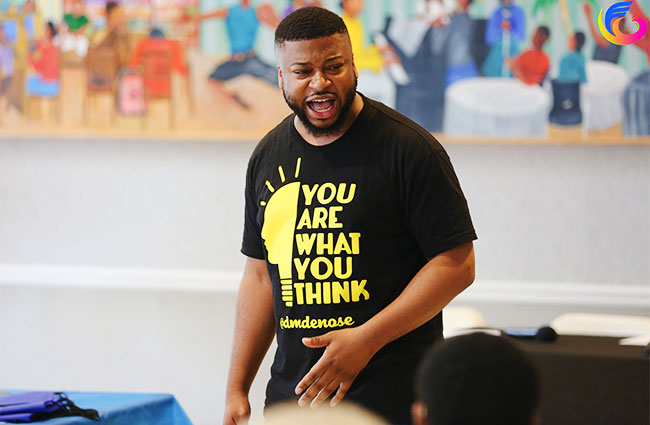I don’t usually do this, but after a meeting last week with friend and colleague Diana Hartley, I was inspired. She told me about her love for the Golden State Warriors and how it came to be. This story resonated with me so strongly I had to share. Below is Diana’s article.
Note: This post was originally published at Diana Hartley Consulting. Thanks to Diana for allowing us to republish it here.
Sports has never been my thing. I was raised in New York City, which meant my family’s sports were shopping and going out to eat. As a child raised partially in Manhattan and West LA, I did attend a few Dodgers games and one or two evenings of Golden Gloves boxing (of all places for my dad to take us in our white gloves and Mary Janes!).
Sports was never encouraged, so after a few attempts at biking and roller skating and falling into rose bushes, I gave up in favor of indoor activities such as ballet, jazz, and tap. I was in LA, and that’s what young ladies did at the time. It took decades, but sports showed up big time last year, and I am thrilled it did.
Last year when my friend Jim started talking a mile a minute (not his normal speed) about Steph Curry and the Golden State Warriors, I listened. His nonstop enthusiasm brought me into his living room to watch Steph and the team do remarkable things night after night, game after game—all the way through the playoffs and their championship win. Wow, such happy energy, such honest victories. I was smitten.
I think what really made me fall in love, besides the high I always get from watching excellence, was how the team seemed to be coached. Something was different about the Warriors. I could feel it. Head Coach Steve Kerr stressed having fun while still being able to compete at the highest level.
“It’s a long season, this was meant to be fun,” he was quoted as saying in a CBS Bay Area article in 2015.
His style seemed down to earth, positive, and highly effective, with no BS and very little ego. In the same article, he described four important values from his coaching philosophy. They are joy, compassion, mindfulness, and competition. Who would have thought three of these values would be soft skills?
Even though the NBA basketball season is the longest in sports—with six more weeks of playoffs until the final championship game—the Warriors brought it with heart and savvy to each and every game. They had what it took to finish the season as champs. Steve’s humane coaching style, generally relaxed demeanor, and wry sense of humor kept everyone grounded and focused.
“When we hit those four things, we’re not only very tough to beat, but we’re very fun to watch, we’re very fun to coach, we’re very fun to be around,” he told the reporter.
How could these values be used to coach a sports team? How does Kerr use them to bring success to his team? Can joy, compassion, and mindfulness really be part of a winning strategy in the highly competitive world of professional basketball? We’re talking about an organization worth $3.1 billion. Do soft skills generate sports dominance and billions of dollars, too? It appears so for the Golden State Warriors organization.
I am not in the locker room or practice facility nor at courtside, but I intuit the word “joy” to mean a great, easy enjoyment for playing with teammates who love the game equally. The Warriors really seem to love what they do, and their enthusiasm is contagious. As their fans know, when the Warriors are on, you can feel the joy in your living room.
The team plays for the love of the game, and that’s joy. Kerr’s coaching style supports handpicked players who work hard for each other because they are all crazy about basketball. It gives them the juice to play a tough game night in and night out for months on end. I believe their natural exuberance comes from team pride and a desire to deliver victories to their huge fan base, both young and old.
Mindfulness, well, that’s another story. I don’t know what that means to Coach Kerr, but for me it is staying tuned to the present moment, acknowledging and respecting others. I see this presence and lack of negativity each time a player is interviewed, teaches their youngest fans the fundamentals of the game, or speaks lovingly about the charities they so generously donate time and money to. These individuals care about others a great deal.
Compassion is empathy at its best. I know that when I feel compassion, I extend my heart to others and am open to understanding them even when it’s hard, even when I don’t like them. It is a belief in people, fairness, and acceptance. Compassion means caring for others, sometimes more than yourself. I see this in the unselfish way the Warriors share the ball as they play. Kerr supports team victories, not star player victories.
And, of course, the last value—competition—must be present to be your best in the world. For the Warriors, I do not think competition means “winning at any cost” because the other three values make competition a game, not ego enhancement. They are great role models for fairness in sports and the many young people who look up to them. This means they competite to win, naturally, but they also compete with themselves to be better every day. All great athletes compete with themselves first.
Why did I share this blog on Coach Kerr and the Warriors (besides being a crazy fan)? Okay, so I wanted to write about them for a while, but I also wanted to show you a winning example of cooperation, teamwork, joy, mindfulness, and compassion, within a competitive business. I wanted you to see that a team, with fans throughout the world, can be role models for how we interact with others in everyday life and can create a win-win situation.
I know that if all of us can embody these values in our daily lives, we will find a way to create a world that works for us all. That is my hope for a brighter future.
So, go out there and be a warrior of joy.
Photo: Thanks to Ron Adams, Ray Rider, and Matt de Nesnera of the Golden State Warriors organization for this photo.















